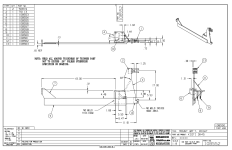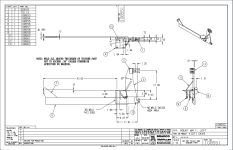PHPaul
Platinum Member
- Joined
- Feb 15, 2011
- Messages
- 763
- Location
- Downeast Maine
- Tractor
- Kubota B2650 with cab, Pasquali 986
Wow. What a thread!
I had a JD750 with a Woods 650 3PH backhoe with it's own reservoir and pump. Given the rather wimpy hydraulics on the 750 the pump was the way to go.
I have recently replaced the 750 with a new Kubota B2650 with a cab.
A bit of experimentation indicates that the old Woods hoe isn't going to work due to clearance issues with the cab. Add to that concerns about stresses from mounting it to the three point and I'm in quite a bind.
My first thought was some sort of adapter or subframe, but looking at this post makes me wonder if it's worth the trouble, especially considering that I'll need to mount the hoe well aft of the tractor for the seat to clear the cab and provide a decently comfortable operating position.
The hoe is 20 years old and I've done pretty much all the ditching/landscaping work it was bought for. I only use it perhaps 2 or 3 times a year now. Given that, the technical difficulties of fabricating a mount that won't involve a day-long process of mounting and dismounting the hoe, and the problems inherent in mounting the hoe so far from the rear wheels, I'm seriously considering selling it and just renting a trackhoe for the odd occasion that I need some serious digging power.
With that in mind, has anyone ever adapted a 3PH hoe to a tractor with a cab?
I had a JD750 with a Woods 650 3PH backhoe with it's own reservoir and pump. Given the rather wimpy hydraulics on the 750 the pump was the way to go.
I have recently replaced the 750 with a new Kubota B2650 with a cab.
A bit of experimentation indicates that the old Woods hoe isn't going to work due to clearance issues with the cab. Add to that concerns about stresses from mounting it to the three point and I'm in quite a bind.
My first thought was some sort of adapter or subframe, but looking at this post makes me wonder if it's worth the trouble, especially considering that I'll need to mount the hoe well aft of the tractor for the seat to clear the cab and provide a decently comfortable operating position.
The hoe is 20 years old and I've done pretty much all the ditching/landscaping work it was bought for. I only use it perhaps 2 or 3 times a year now. Given that, the technical difficulties of fabricating a mount that won't involve a day-long process of mounting and dismounting the hoe, and the problems inherent in mounting the hoe so far from the rear wheels, I'm seriously considering selling it and just renting a trackhoe for the odd occasion that I need some serious digging power.
With that in mind, has anyone ever adapted a 3PH hoe to a tractor with a cab?

